| A | B |
|---|
| The science of the structure of the animal body | Anatomy |
| When the horse has a complete set of permanent incisors. | Full Mouth |
| The outer angle at which the upper and lower incisors meet. | Angle of Bite |
| (biting teeth). and are used for tearing grass and other forage | Incisors |
| The pair of incisors in the middle. | Centrals |
| The pair of incisors on either side of the centrals. | Laterals |
| The outer pair of incisors. | Corners |
| The powerful grinding teeth (also known as cheek teeth) | Molars |
| The first three cheek teeth are called what? | Premolars |
| The molars are primarily used for what? | Grinding Food |
| The grinding surface of the molars is called what? | Table |
| When a horse chews food it does so in what kind of a motion? | Circular |
What is this picture showing?, 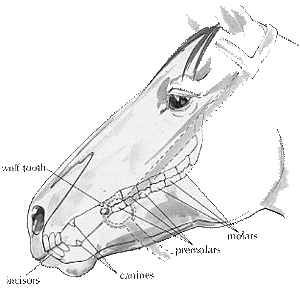 | The position of the teeth in the skull |
How old is this horse?, 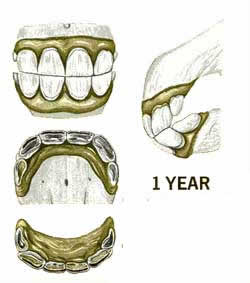 | Age 1 |
How old is this horse?,  | Age 2 |
How old is this horse?, 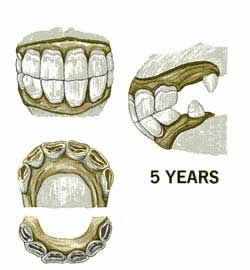 | Age 5 |
How old is this horse?, 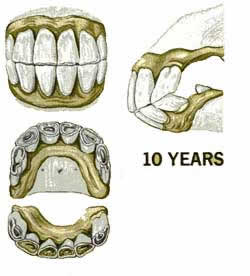 | Age 10 |
How old is this horse?, 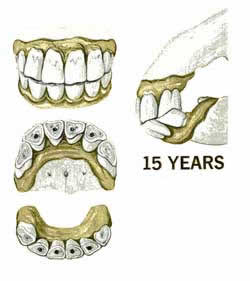 | Age 15 |
How old is this horse?, 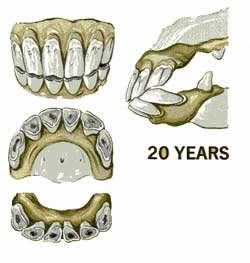 | Age 20 |
| Foals will have their first incisors by how old? | One Week |
| A foal should have his second, third, and fourth premolars by what age? | Two Weeks |
| Small teeth that erupt in the first premolar position (these teeth are usually removed). | Wolf Teeth |